- OT
- Life in practice
- Practitioner stories
- 21 insights from 2021
21 insights from 2021
As we look back on 2021 and prepare for a new year, OT rounds up top research stories and High Street trends from the past 12 months, along with reflections from optometrists and the AOP

The past year has been eventful to say the least. 2021 has seen a second lockdown in the UK, followed by the lifting of restrictions in July, sports events taking over our screens – from Wimbledon, to the EUFA Euro championships and Tokyo Olympics – and a new take on the space race.
The UK has also witnessed the vaccination programme gather speed, with 81.9% of the population aged over 12 having had a second dose at the time of writing.
With 2021 drawing to a close, OT has gathered 21 of the top stories from across optometry over the past year, ranging from advances in research to developments in industry and challenges on the High Street, to reflect on an unusual year. OT also heard from members of the AOP on some of the key topics and projects the association has covered in its work to support members through the past 12 months.
Five innovations changing eye health from 2021
November saw the release of initial findings from a UK project that aims to sequence 100,000 whole genomes from NHS patients and their families.
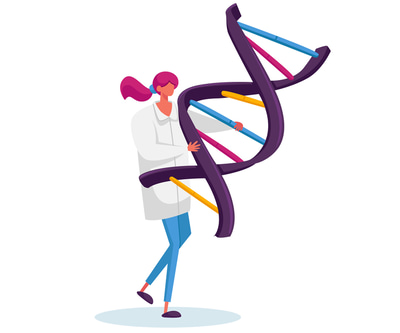
The pilot resulted in a new diagnosis in 25% of cases, with 14% of new diagnoses found in sections of the genome that would be missed using conventional methods.
“Our pilot study of genome sequencing in a national health care system showed an increase in diagnostic yield across a range of rare diseases,” the authors highlighted.
A patient who became blind 16 years ago was able to detect lines, shapes and simple letters with the help of an intracortical microelectrode array implanted in her visual cortex.
The patient then wore eyeglasses with a miniature video camera. Specialised software encoded the visual data collected by the camera and sent it to electrodes within the implant.
Professor Eduardo Fernández, from the University Miguel Hernández in Spain, highlighted that the results are exciting because they suggest that information can be transferred from the outside world directly to the visual cortex of blind individuals.
UK trials will test the effectiveness of low dose atropine eye drops, spectacles lenses and contact lenses in managing myopia.
Aston University is aiming to recruit 200 children across three trials by the end of 2021. Lead researcher at Aston University, Dr Nicola Logan, shared: “In these trials we want to find out the impact of different interventions on myopia progression in UK children, as well as look at why myopia develops and how it progresses in children, to see if we can enhance the current interventions. New information may be used to make the myopia control interventions more effective.”
A study exploring the role of aquaporin proteins in the development of cataracts could lay the groundwork for a non-surgical treatment for the eye condition.
The research, led by Anglia Ruskin University, was presented at the Association for Research in Vision and Ophthalmology annual meeting in May.
Scientists found that a protein responsible for water passage in the lens, aquaporin, may disrupt optical development, leading to cataract formation.
Research lead, Professor Barbara Pierscionek, highlighted: “This discovery, together with our research on nanotechnologies that indicate drug therapy for cataract is possible, could potentially revolutionise the way cataract is treated, opening up the field for drug-based therapy rather than surgery.”
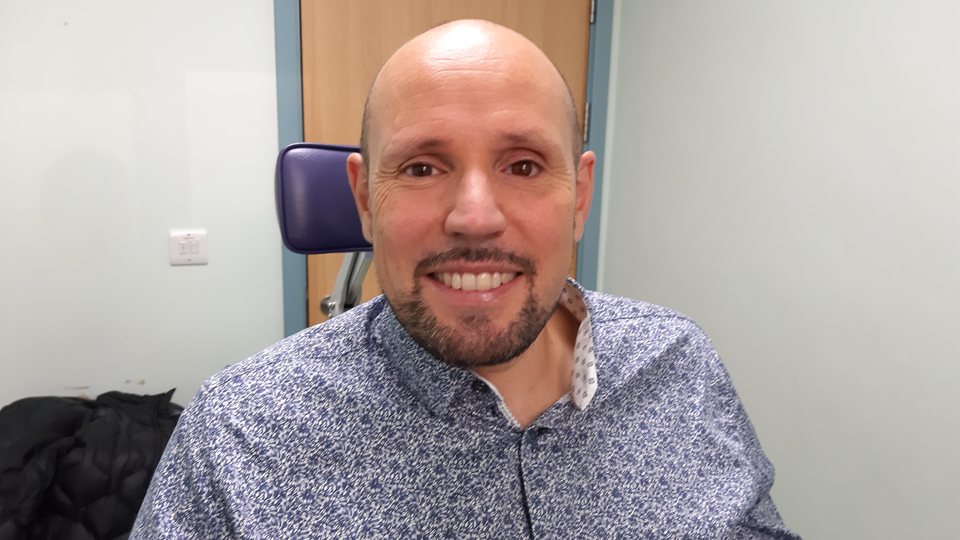
A 3D printed prosthetic eye has the potential to reduce waiting lists for the life-enhancing medical device.
Hackney engineer, Steve Verze, 40, was fitted with the fully digital prosthesis in November – in what is believed to be a world first. He shared that he had worn a prosthetic eye since the age of 20.
“When I leave my home, I often take a second glance in the mirror, and I’ve not liked what I’ve seen. This new eye looks fantastic and, being based on 3D digital printing technology, it’s only going to be better and better,” Verze said.
In comparison to a traditional hand-painted prosthetic eye, which takes around six weeks to develop, once an initial scan has been taken, a 3D printed prosthetic can be completed in around two and a half hours.
Three observations from optometry on the High Street
When speaking with OT, professionals agreed that the effects of COVID-19 have continued to pose the biggest challenge for practices on the High Street in 2021.
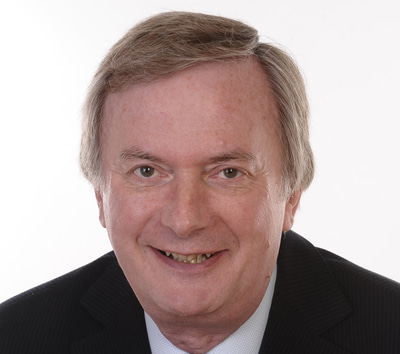
Despite this, he noted: “Perhaps surprisingly, fewer patient visits have actually helped practices’ financial performance – the dispensing conversion rate and the average dispensing value per patient have both increased significantly and have more than compensated for fewer appointments.”
Looking to the future, he suggested that recognising that “patients will pay more for quality care and products” will be key for practices.
With the effects of the pandemic ongoing, however, inflation could become a “commercial headwind,” he highlighted, affecting consumer spending power and the cost of optical products.
Wiggins shared that one of the biggest challenges for businesses has been “managing the so-called ‘pingdemic’ with our team and clients having to self-isolate at short notice.”
This has meant ensuring enough people are in practice teams to provide patient care and manage last-minute diary changes. She shared: “With the booster programme, we hope we won’t see this level of disruption into 2022.”
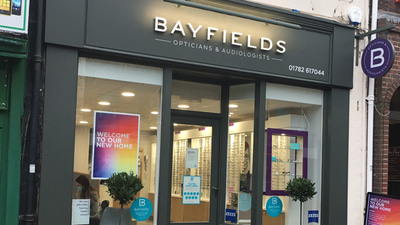
“With the introduction of the COVID-19 Urgent Eyecare Service (CUES) in a lot of areas of the country, we have been able to show and prove how we, as a profession, can help to support and ease the burden on hospital eye services,” Wiggins said. “We should now build on this to roll out more enhanced services within the primary care setting.”
As well as supporting secondary care, Wiggins shared: “This provides a significant opportunity for a practice to be an integral part of the local community.”
Majithia also identified isolation requirements as a challenge. In addition, the practice has scheduled longer appointment times in order to allow for extra hygiene measures, but this has meant “the true cost of providing eye care has gone up significantly during this year,” he told OT.
“There has been much debate about the inadequate GOS fee – it is becoming increasingly unsustainable to provide sight tests under GOS,” the practice owner and AOP Councillor shared. He suggested that many more practices are likely to consider going fully private in the future.
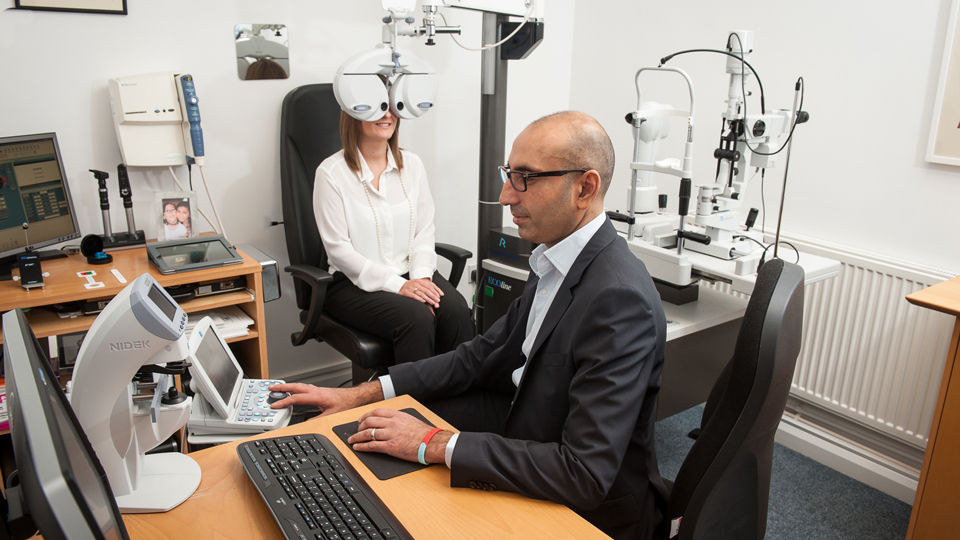
The increasing hospital waiting times, which has created more demand for services in community optometry practices, “has put greater pressure on our practice teams in order to prioritise care for patients that require urgent attention,” Majithia noted.
He highlighted that, with the onset of the Omicron variant in the latter months of 2021, “it is likely that we will continue to face these challenges in the coming year.”
There are still areas of development for practices in 2022, though, and Majithia shared: “I believe patients are placing a greater value on their health and wellbeing. I think that this will lead to a greater uptake of advanced eye examinations using technology such as optical coherence tomography, wide field imaging and dry eye management tools.”
A heightened awareness of the effects of high myopia, and increased understanding of its causes, has also positioned myopia management as a “significant opportunity” for practices going forwards, he shared.
Reflecting back on the year, Majithia told OT his key takeaway has been that “Optometry needs to be recognised for the vital role we play in the healthcare community, and better support and funding for our services is essential.”
Three unusual eye conditions BMJ authors described in 2021
9. Mysterious case of red tears
A 25-year-old woman who presented to hospital with drops of blood coming out of both eyes was found to be experiencing ocular vicarious menstruation.
Describing the case in March, BMJ Case Reports authors highlighted that after the patient was prescribed oral contraceptive pills she experienced no further symptoms at a three-month follow up.
10. A patient presents to hospital with blue sclera
In November, clinicians described the case of a patient who presented to hospital with flu-like symptoms, blue sclera, and blue-tinged skin.
The 73-year-old man was found to be experiencing a reaction to the antibiotic, minocycline.
Case report author, Dr Stacey Law, observed: “Long-term minocycline use is associated with scleral and skin hyperpigmentation, with no apparent adverse effect on ocular structure or function.”
11. Potato and biscuit lockdown diet leads to vision loss
A 23-year-old woman whose diet changed during lockdown presented to hospital after she experienced vision loss as a result of malnutrition.
Describing the case in August, BMJ Case Reports authors highlighted that the woman temporarily lost vision in her left eye as a result of severe iron deficiency. The iron-deficiency was attributed to a “drastic” change in her dietary habits following the COVID-19 lockdown, with the woman’s diet mostly consisting of potato-based foods and biscuits.
The patient’s vision in her left eye improved from counting fingers to 6/15 one month after receiving a red blood cell transfusion and intravenous iron supplementation.
One clinical insight on advances in optometry
Peter Hampson, clinical and professional director of the AOP, reflects on recent developments in the teleoptometry discussion – and the need for a cautious approach to new processes
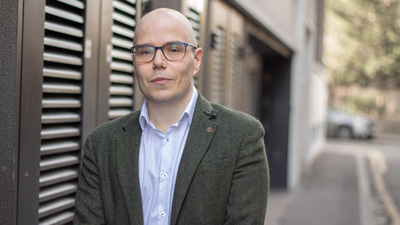
Gone are the days of only being contactable when at our desks, at home or within reach of a phone box. Navigation no longer requires a map and compass. Music, video, TV and communications are literally in the palm of our hand. As a profession we love a new toy, and if that toy brings improvements in patient care or our ability to analyse, then we are on the whole happy optometrists. It is therefore easy to be seduced by technology and presume new or innovative solutions equate with better care. However, that isn’t always the case.
Teleoptometry has the potential to bring significant benefits: it can allow patients who are struggling to access care to obtain expert advice and it can help to ensure prioritisation is given to those who most need to access care. However we have to be careful not to simply use technology for the sake of doing so. New ways of working should improve outcomes for patients; if they fail to do so, or introduce unnecessary risk, then we shouldn’t stand by and allow this to happen.
Concerns in tech
Many optical professionals will be aware of a new entrant to the UK optometry market, whose innovative technology aims to provide a refraction with the optometrist working from home and the eye health examination at a later date when the patient attends the practice.
In my view, this is an example of where new is not necessarily better. The separation of two intrinsically linked parts of the eye examination means that each practitioner only has part of the information available and that creates a risk to all involved. The refracting practitioner is unaware of any pathology, whether that is a simple low grade cataract or, more worryingly, early wet age-related macular degeneration. The practitioner conducting the eye health examination is in the unenviable position of either placing trust in a refraction that was conducted remotely, or having to conduct a full sight test when they may not have the time in their diary to do so.
Technology in optometry should help to improve the care that we can offer
The time period between the two appointments places the patient at risk as the detection of pathology may be delayed. Simple issues that would be noted and actioned, when care is delivered in the traditional way, may suffer worse outcomes. Therefore, while the patient may be impressed by the technology, they aren’t necessarily provided with better care in the long-term.
There is also the question of whether this model of service provision is compatible with the Opticians Act. That is ultimately a question for the General Optical Council (GOC). Personally, I have my concerns, and even if the decision that is made by the GOC is that it is compliant, the bigger question is whether it is in the interests of the public to introduce unnecessary risk. As with so many things in life, just because you can do something, doesn’t mean you should. That is something that everyone should consider before agreeing to work in novel environments.
Evolution in the year ahead
I expect to see a further push towards new ways of working in 2022. Some of these updated functions will be aimed at helping patients and some will be to drive productivity. Technology in optometry should help to improve the care that we can offer and we have to be vigilant that we don’t adopt technology just because it exists.
There are many areas where artificial intelligence could improve the care that we offer, bringing secondary care expertise to a primary care setting. At the same time, there are many areas where a loss of the human interaction between patient and practitioner could result in a worse outcome for the patient. We shouldn’t underestimate the value that we bring in distilling complex subjects into patient-friendly language.
Three themes from industry
This year has seen a number of exciting developments in eyewear, contact lenses and equipment. OT picks out just three key themes from the year.
One of the most talked about topics this year was that of myopia management. A key contribution to this was the passing of the World Council of Optometry’s resolution recommending that optometrists incorporate a standard of care for myopia management into practice.
Manufacturers have also been progressing services in myopia management, with Haag-Streit UK launching its Lenstar Myopia, and Hoya’s Miyosmart lens with patented Defocus Incorporated arriving in the market.
The spring saw a host of partnerships hoping tackle the issue, such as a joint acquisition by EssilorLuxottica and CooperCompanies of SightGlass Vision, a company focused on developing spectacle lenses to reduce the progression of myopia.
In contact lenses, Johnson & Johnson Vision and Menicon revealed a strategic collaboration, while CooperVision adopted No7 Contact Lenses into its Specialty EyeCare group, supporting the development of myopia management solutions.
Sustainability discussions have been gathering speed. Luxottica and Mazzucchelli formed a collaboration to work on a new sustainable acetate that would be accessible for all market players. As part of the agreement, Luxottica was positioned to take a minority stake of 35% share capital of Mazzucchelli to finance the project.
In fact, brands across the UK and Europe took significant actions to address sustainability. Andy Wolf eyewear announced plans to switch its acetate collection to a new sustainable material from Mazzucchelli and Eastman in 2022, while the brand, Pala, received B Corporation certification. Thélios formed a partnership with Mazzucchelli 1849 and the specialty materials provider Eastman to develop new sustainable acetate frames, while Safilo also joined up with a number of partners to introduce new ecologically-friendly materials to its products and processes.
Speaking to OT about key eyewear trends, Giovani Lo Faro, Modo Eyewear’s European CEO, shared: “Consumers are seeking brands that empower them to make a difference without compromising style.”
After battling challenging market conditions in 2020, financial results from key manufacturers indicated consolidated recovery in the UK this year.
Companies have continued to make major moves. After a process that stretched through two years, involving divestments required to comply with competition authorities, EssilorLuxottica completed its acquisition of GrandVision.
EssilorLuxottica also received clearance from the UK Competition and Markets Authority for its acquisition of the Lenstec Optical Group. Essilor already had a minority stake in the company through Shamir and confirmed its proposal to acquire the remainder in early 2021.
Elsewhere in eyewear, Kering Eyewear acquired the Danish brand Lindberg, reinforcing its position in the luxury eyewear market segment, and more recently, LVMH announced plans to fully integrate Thélios into the business, purchasing a 49% stake held by Marcolin.
One reflection on developments at the AOP
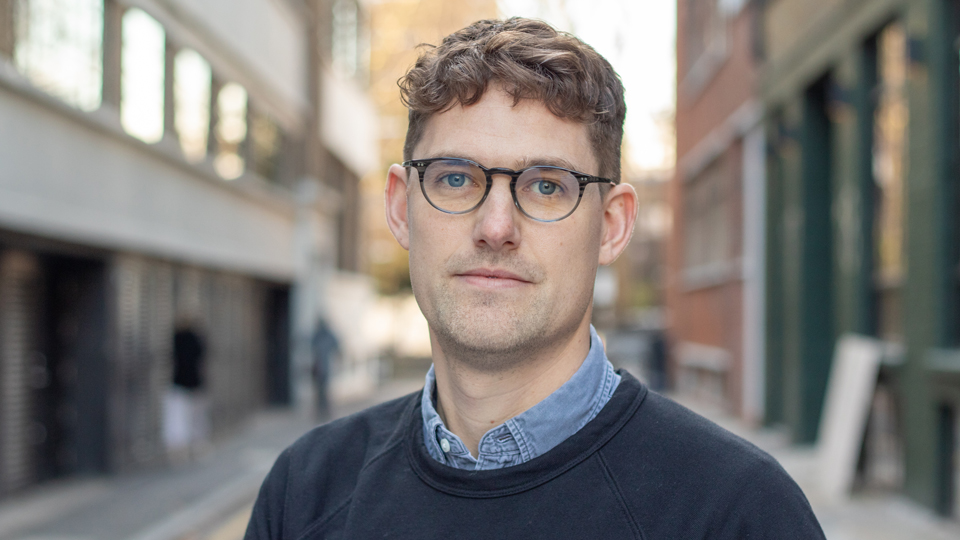
16.From education, to mentoring and public campaigns: John White, AOP director of communications, looks back at some of the ways the AOP has sought to support members in 2021
AOP education is a vital offering to members, but as the impact of the pandemic continued to ripple through 2021, we focused on a predominantly online-only model as the current CET cycle came to an end. This included delivering 64 webinar or peer discussion sessions this year. The release of a digital CET Survival Guide with Johnson & Johnson Vision in September ensured members looking for an opportunity to secure final points received the support they needed in what has been another tough year. In 2022, with the launch of the GOC’s new CPD scheme, members can expect to see a dynamic education programme, with 100% Optical in April bringing face-to-face learning back for members on a large scale.
Optometry Today continues to be an excellent resource for members – and the website and print journal will develop further under the leadership of its new editor, Emily McCormick – congratulations Emily! Alongside daily online content on www.aop.org.uk/ot, keeping readers abreast of the effects of the pandemic for the sector, 2021 saw the launch of a Practice team guide with Johnson & Johnson Vision, and a Myopia guide with CooperVision, plus a detailed two-part report on the COVID-Generation of student optometrists. Following the enhancement of OT’s Jobs listing section, including the launch of a free listing service as a new member benefit, members can expect more developments to support their career progression needs in 2022.
This year, the AOP online mentoring scheme launched for newly-qualified and pre-reg members – and work is underway to extend the programme further in 2022. Building on the success of the AOP Locum logbook, the AOP released an online edition in response to member demand, in partnership with Johnson & Johnson Vision.
Work by the AOP to promote the importance of eye health – and the role of community optometry – in the minds of the general public continued this year, with the launch of two successful media campaigns: SPF for your eyes and Know your lenses. In 2022, we will build on the foundations we laid in the AOP’s Strategy for Optometry. Putting forward a view of the future of optometry across the UK, our work will focus on putting forward a powerful and articulate narrative for our profession, which is ready to play a larger role in the provision of health care.
Four optometrists on their stand-out moments
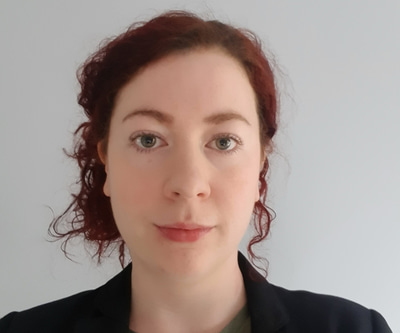
My biggest professional achievement in 2021 was… Being able to juggle my work commitments as a lecturer and in research whilst continuing to work as a practising optometrist. It has been very fulfilling.
My most unusual professional moment in 2021… A patient requesting their fundus photograph to use as a screensaver on their phone.
The patient who made me smile in 2021… I fitted contact lenses to a child who requested they have contact lenses for starting secondary school. I was amazed by the improvement to their confidence and anxiety levels when they were seen at their first aftercare.
The thing I am most excited about in optometry in in 2022 is… I am very excited about the new myopia management continuing professional development module which will be offered at Glasgow Caledonian University next September to community practitioners. I am looking forward to having the opportunity to support practitioners in their learning of myopia management.
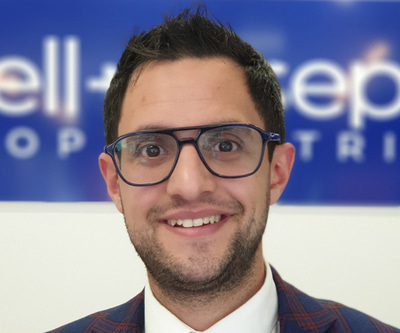
My biggest professional achievement in 2021 was… being chosen to talk at the annual Optix conference about the change to a private model and listening to the feedback from other business owners who were inspired by me and the others who presented.
The patient who made me smile in 2021… was an 81-year-old lady who walked into my consulting room and saw me wearing a bright orange Alium frame and immediately said, "I must have one of those," and went and bought a pair. The level of excitement that she had from such a simple purchase and the fact she called us "twins" because of it (which won't go down well with my actual twin) was simply wonderful.
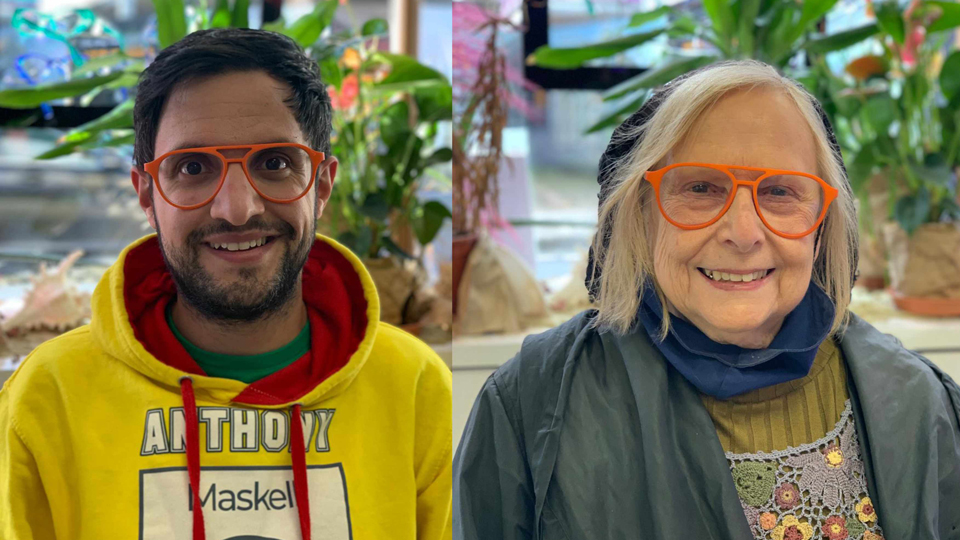
One thing that brought me joy in 2021… My wife and I welcomed our second daughter into the world on 24 April. Sadly, with the restrictions she wasn't greeted with the same level of welcome that her older sister (born June 2019) was, but she's much loved by her big sister and our two dogs – not to mention a very proud mum and dad.
The thing I am most excited about in optometry in 2022 is… We've just launched our dry eye clinic with a huge investment in technology, incorporating Essilor's Idra and Tear-Stim diagnostics and treatments. We're looking forward to helping our patients who suffer with dry eyes manage their conditions more effectively.
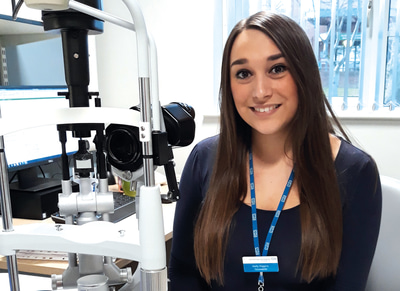
My biggest professional achievement in 2021 was… Starting my paediatric ophthalmology PhD in October.
My most unusual professional moment in 2021… Being asked to appear live on BBC Breakfast, only the afternoon before… and agreeing to do it.
The patient who made me smile in 2021… Receiving my first ever patient thank you card! This is something that has never really happened to me personally in hospital optometry, as you are usually working as part of a larger team, but it really made me smile.
The thing I am most excited about in optometry in 2022 is… Where my research journey may take me.
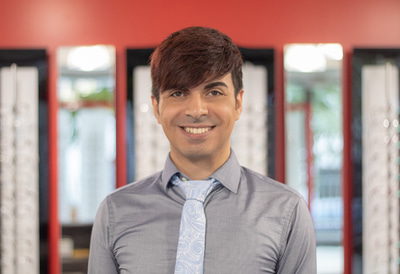
My biggest professional achievement in 2021 was… Establishing myself as an independent, recognised optometrist in my local area. I've built relationships with patients, private healthcare providers, and ophthalmologists, who recommend me specifically, which is an extremely rewarding experience.
The patient who made me smile in 2021… There have been so many. I'm very privileged to be working in a calm, independent practice where all the patients are lovely and kind. You really feel like part of the community when you're further away from the big cities; the patients pop in to say hello as they walk past and leave us biscuits and chocolates.
The thing I am most excited about in optometry in 2022 is… Building on my paediatric clinics where I practice myopia control and manage binocular vision anomalies. It's been my way of putting my own clinical stamp on the practice and it's been exciting to be able to provide solutions that actually make a difference for children as they grow and learn.
A word from the CEO
Adam Sampson, AOP chief executive, shared: “In June 2021 I started my tenure as chief executive with keys to an almost empty office amid lockdown restrictions. And, while closer to ‘normal’ than the previous 12 months, the pandemic has never really strayed from our central view. But amid the ongoing difficulties of COVID-19, and now Omicron, the role of optometry in the community continues to evolve at pace. Whether it be wider regulatory reform, a rapidly moving online retail market or technology, the way eyecare is delivered is intrinsically changing, and with it, lies our opportunity.
“I have been struck by the adaptability and resilience of the optical profession. Through adversity and change, our members have consistently risen to the challenge. Moving forward into 2022, we will be actively working to champion the vital contribution of optometrists as part of the wider primary care family – and continue to support members with an unrivalled education offering with the future in mind.”
OT would like to thank our contributors for sharing their comments for this piece.
Advertisement



Comments (0)
You must be logged in to join the discussion. Log in